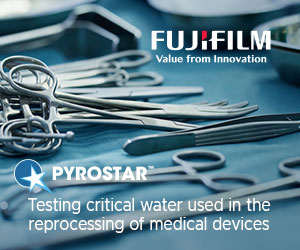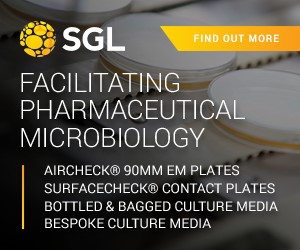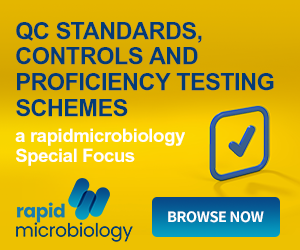Rapid Yeast and Mold Testing Yielding Results in 48 Hours
| | Why test for Yeast and Molds? Molds are agents which can be responsible for the contamination and spoilage of a variety of products. Some molds develop mycotoxins which diffuse into the product and may, if present in sufficient quantity, cause acute or chronic poisoning. The presence of yeasts may produce changes affecting product quality and salability, leading to significant financial implications for food producers. Both yeast and mold can cause various degrees of deterioration and decomposition of products such as cosmetics, and foods. Products containing yeast and mold cells do not usually cause human illness, but high levels of these organisms can cause products to look, smell, or taste bad. This not only diminishes the appeal of the product and brand, but can also result in substantial economic losses to the producer, processor and consumer. Yeasts are facultative anaerobe, mono-cellular fungi, fermenting sugar substrate to CO2 and H2O. Under anaerobic conditions yeasts ferment sugar to alcohol and CO2. The term 'mold' is commonly used for the visible part of the fungi present on the surface of contaminated products. Fungal spoilage of food remains a serious problem, one that has been estimated to account for between 5% and 10% of all losses in global food production. |
| Plate Count Method for Yeast and Molds Visit www.mybiolumix.com for more information on the Biolumix 48 hours Yeast and Mold test.Most industrial products are required to be tested for yeast and mold. The pate count methodology for testing yeast and molds are described in various reference publications, including Foods (Bacteriological Analytical Manual, 8th Edition, 1998. Chapter 18); Cosmetic and non-sterile Pharmaceutical products (USP <61>) and Nutritional and Dietary supplement products (USP <2021>). The methods involve mixing the sample with a diluent followed by decimal dilutions and the addition of the diluted sample into duplicate Petri dishes, the addition of selective culture media (such as Potato Dextrose Agar, Sabouraud Dextrose Agar). The plates are incubated for 5-7 days at 20-25oC, after which plates with 25-250 colonies are counted. Due to the ability of some molds to spread rapidly on the plates, the interpretation of conventional colony counts can be difficult, requiring considerable staff input. Automated methods can help reduce the possibility of human error and free up skilled technicians for other tasks. BioLumix Rapid Simplified Assay Principle of Operation The BioLumix Yeast and mold vial (YM) includes a CO2 Sensor. Carbon dioxide (CO2) is a universal metabolite produced by all microorganisms. For yeast and molds, the Krebs cycle is part of a metabolic pathway involved in the chemical conversion of carbohydrates, fats, and proteins into CO2, water and energy, and as a result all aerobic organisms generate CO2. The sensor is located at the bottom of the vial. The sensor vial contains a transparent solid sensor that changes color whenever CO2 diffuses into it. The color of the sensor is dark in sterile vials. As microorganisms grow the sensor turns yellow, indicating CO2 production and metabolic growth. This two-zone vial eliminates interference of the optical pathway by the product and microbial turbidity. Since changes of color are monitored in the reading zone, results are not influenced by the presence of the sample or the growing microorganisms. Only gases can penetrate into the sensor that blocks liquids, microorganisms and particulate matter. The user introduces the sample by simply opening the screw cap and dropping the sample into the incubation zone. Typical Results The typical procedure involves the addition of the sample to a diluent followed by the addition of the sample to the ready-to-use vial. The vials are introduced into the BioLumix instrument and the rest of the operation is fully automated, including report generation. Variety of yeast and molds where tested with the YM vial. High numbers of yeast can detect in a few hours where as single numbers detect normally in 30 hours. Mold grow a little slower, while high numbers can detect in 6-8 hours, low numbers might take up to 48 hours to detect. A variety of products were tested for yeast and molds including: Nutraceutical and Dietary supplements (multi vitamins, amino acids, enzymes, Psyllium, Spirulina, fish oil, and numerous other supplements); Over-the-Counter Pharmaceutical (soft and liquid capsules, cold remedies, vitamins and minerals, eye care products, oral hygiene products, laxatives, antacids, pain relives, to name a few); Cosmetics and toiletry products ( hand cream, Aloe concentrate, hair dye, shampoos and conditioners, tooth pastes and rinses, soaps, mascara, lipstick, foundation, and many more); Foods (cheese, yogurt, ice-cream, salad dressing, fruit pulp, etc.) Advantages The first noticeable advantage is that BioLumix provides results in 48 hours, compared to traditional methods, which take 5-7 days. The rapid results provided enables manufacturers to release their products into the supply chain much earlier than when testing with traditional methods. BioLumix can make the microbiological testing simpler, faster, and automated- saving significant time, labor and money. The YM vial accelerates product release with a simplified, automated approach. This yields fast, accurate results while reducing costs.
|
NOTE: This item is from our 'historic' database and may contain information which is not up to date.
Source : BioLumix, Inc. View archived contact details
Posted on November 10, 2011






